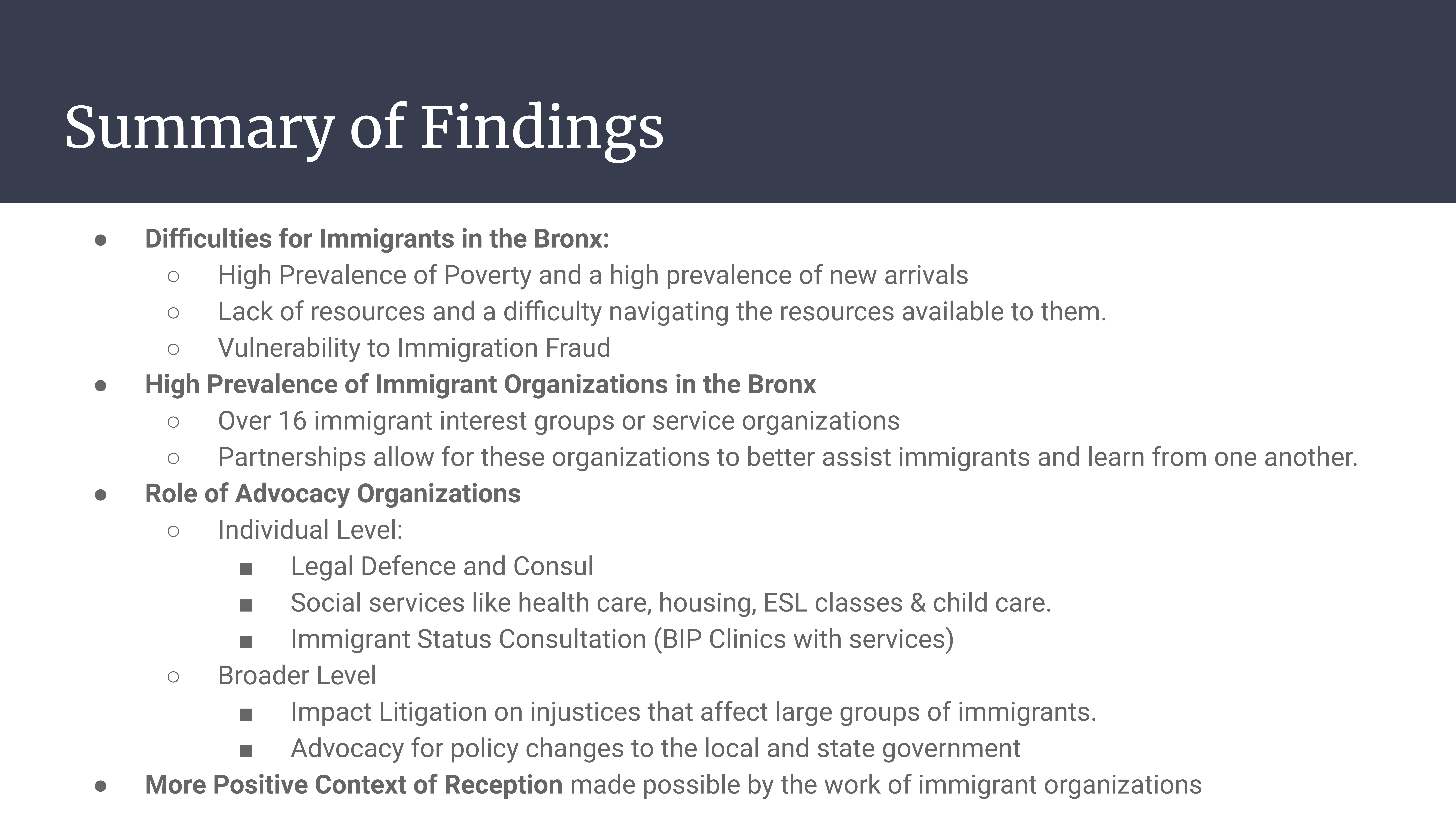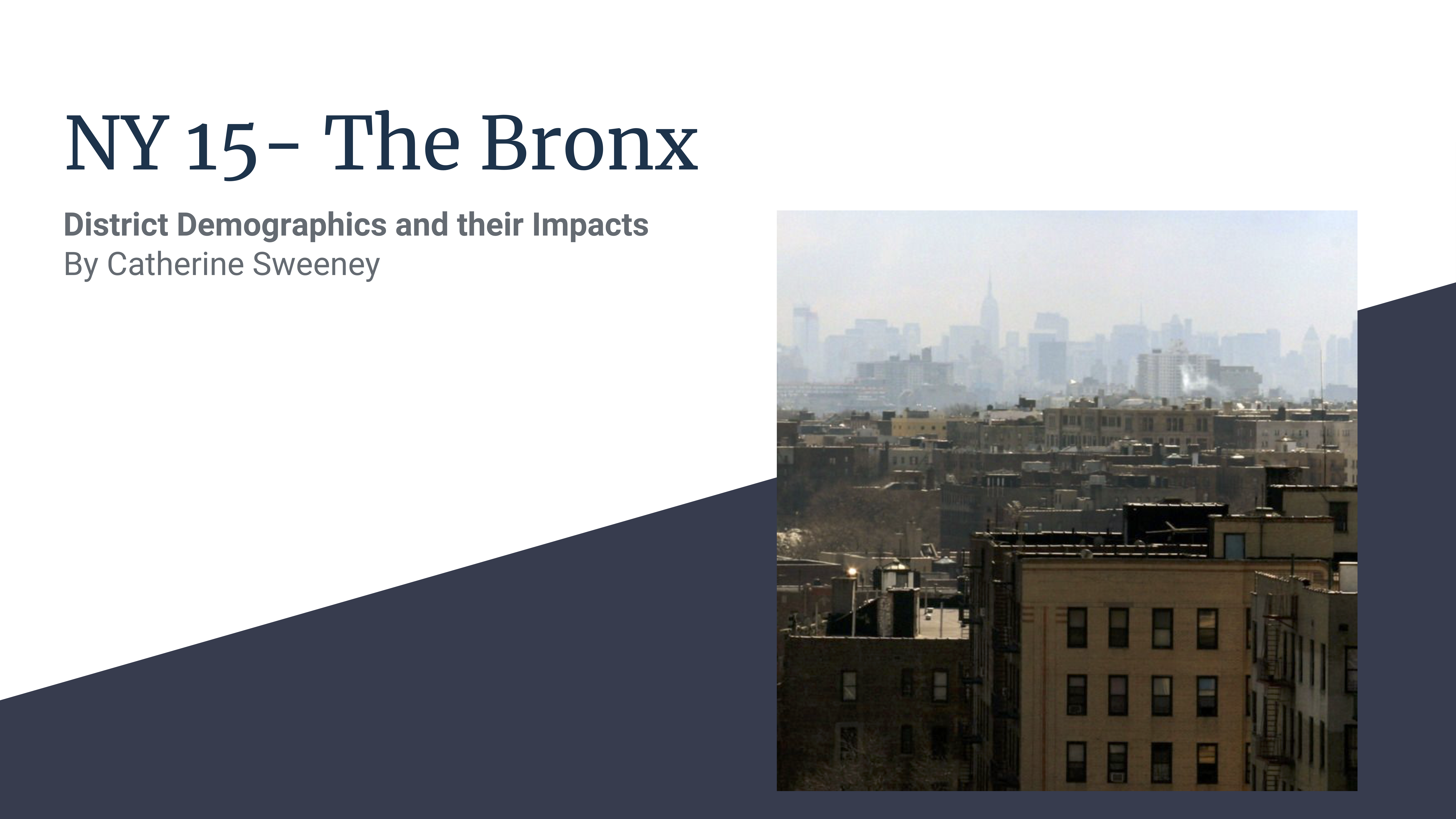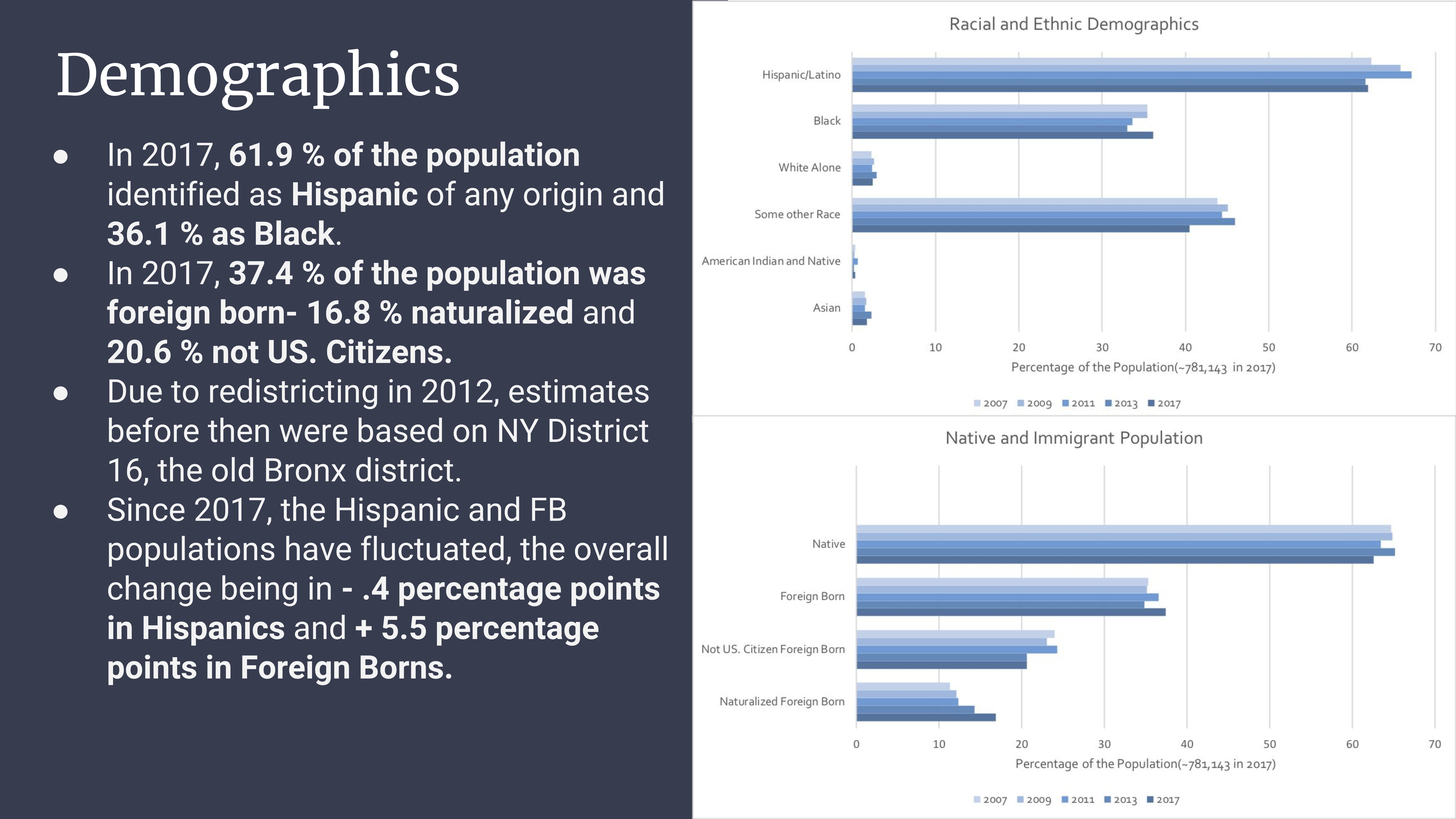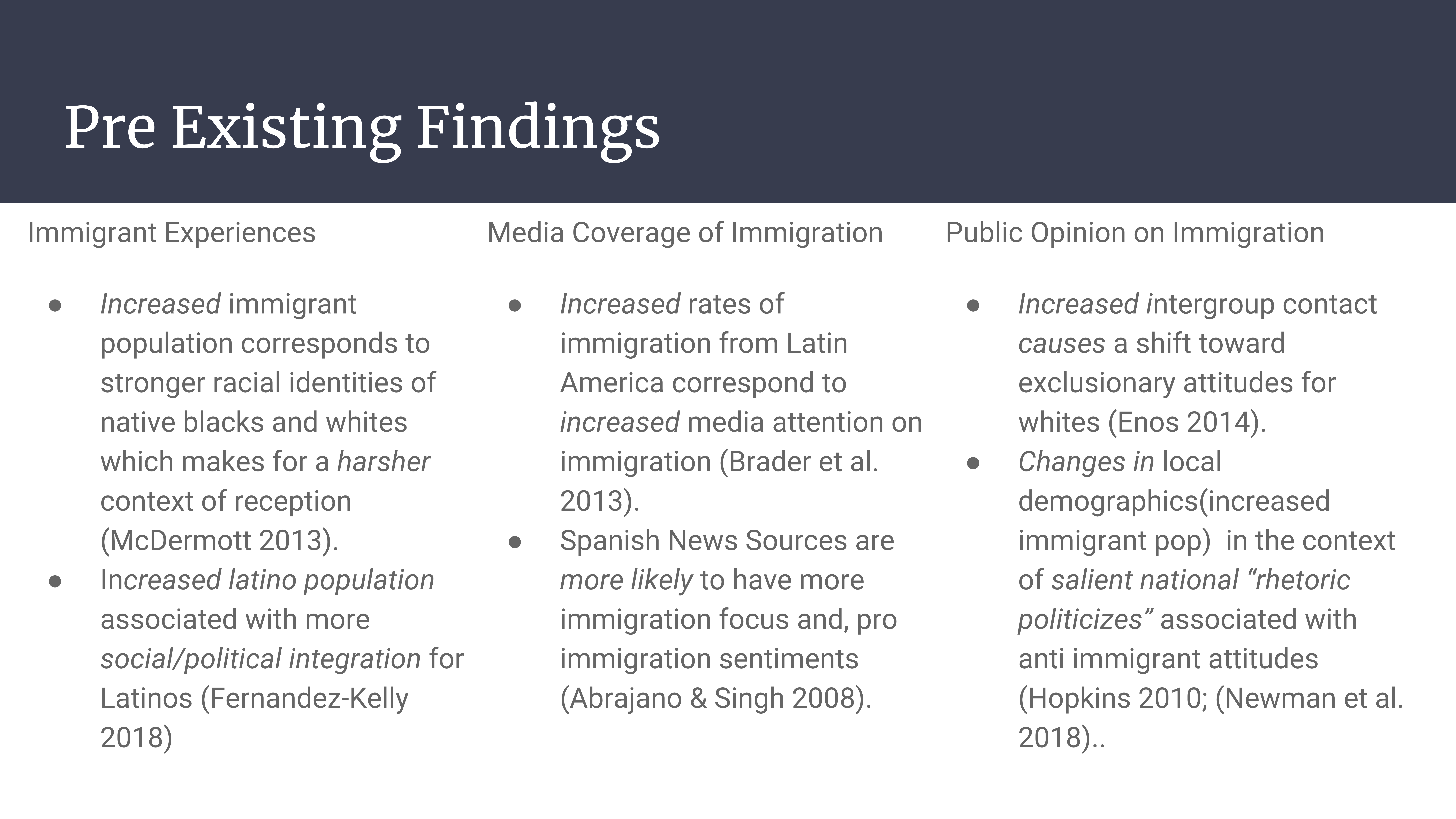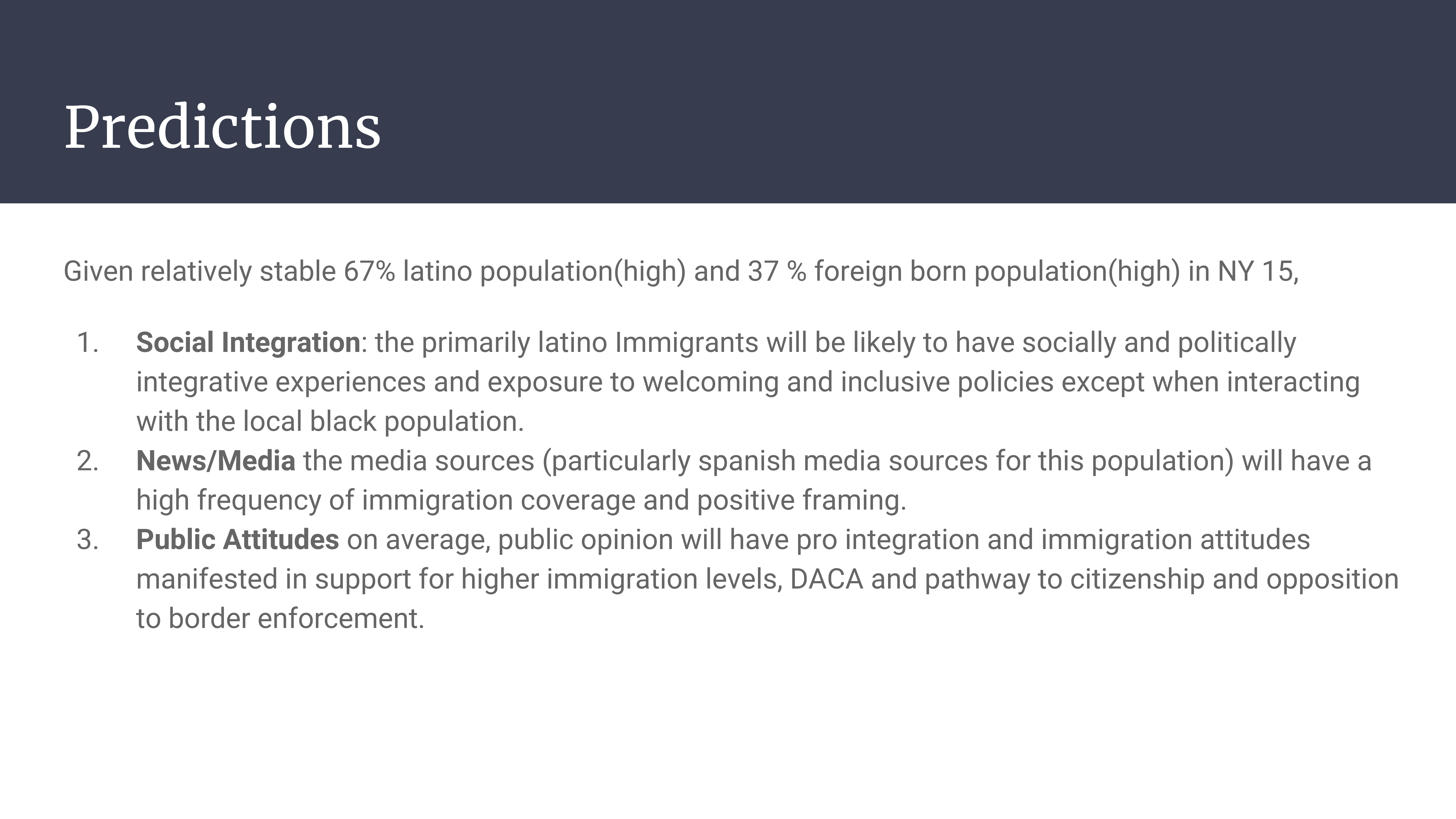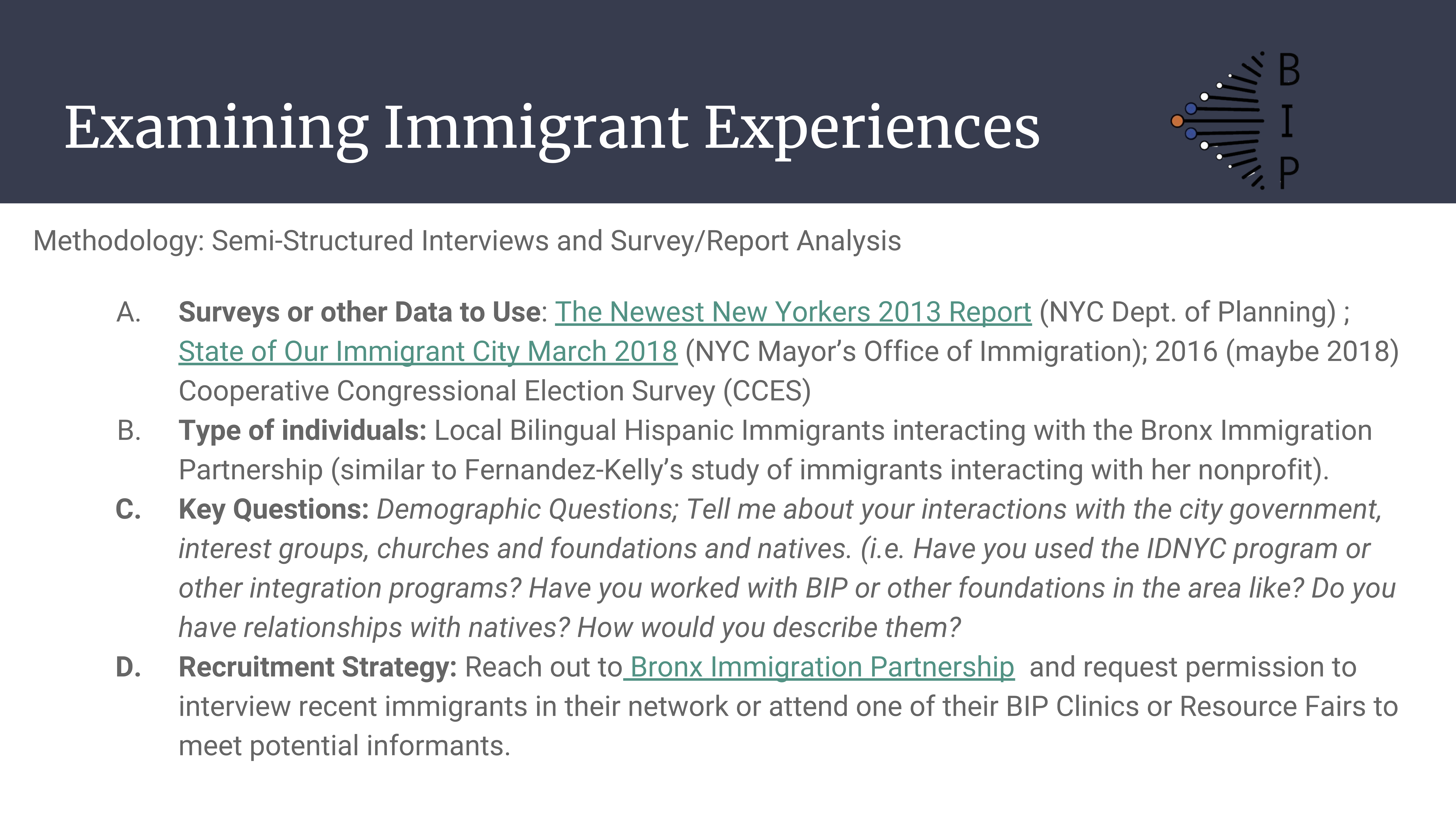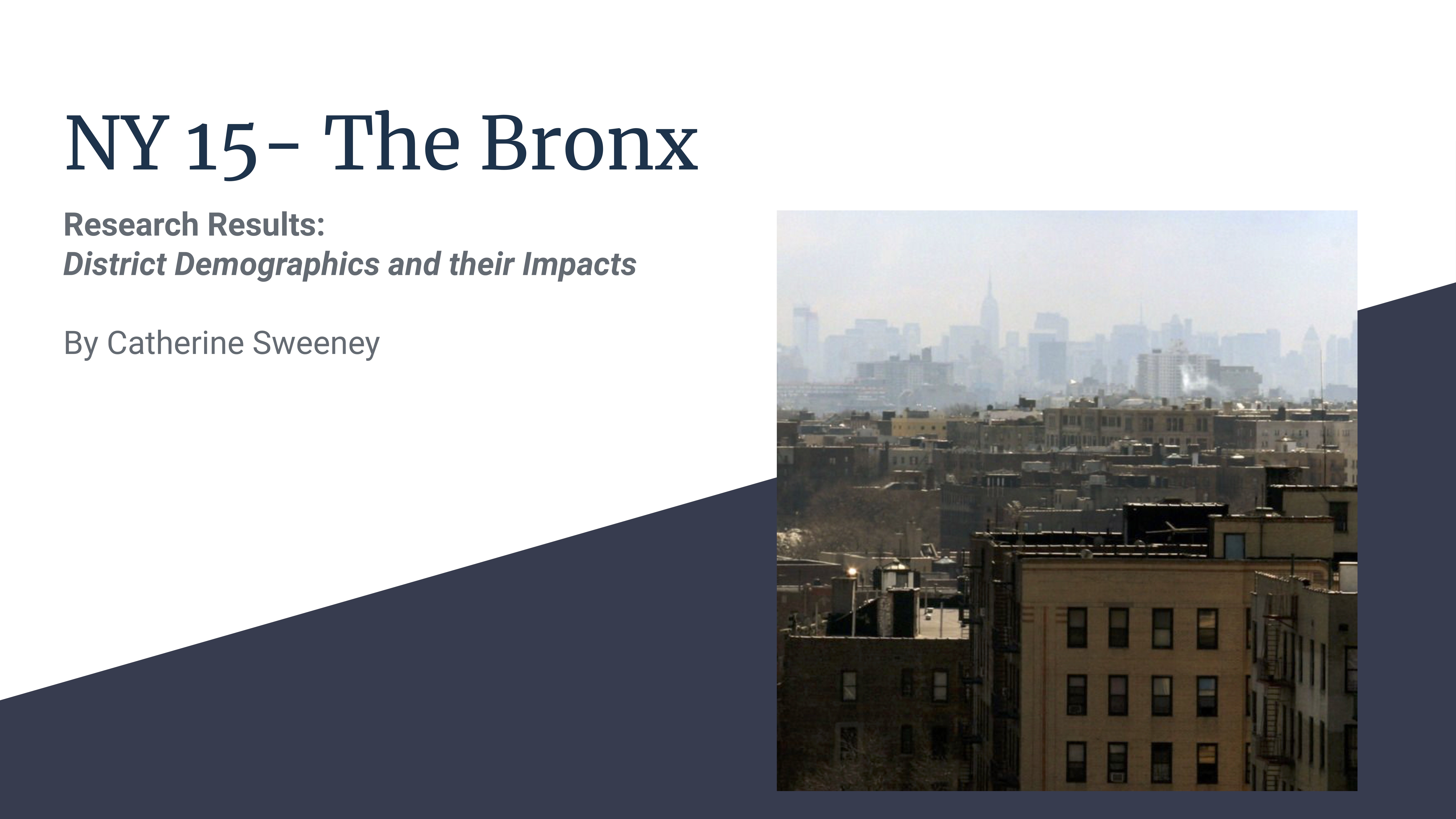
The 15th Congressional District has consistently had a huge Hispanic population and a large foreign-born population. The Hispanic population has remained consistently high only fluctuating down .4 percentage points since 2017. The Foreign-Born population has grown in the past decade, gaining 5.5 percentage points since 2007. In light of prior research, it is likely that the relatively stable 67% Latino and 37% foreign-born populations in the Bronx bode well for new arrivals from Latin America. First, the primary Latino immigrants will likely have socially and politically integrative experiences and exposure to welcoming policies similar to Fernandez-Kelly’s findings in Trenton. Furthermore, the prevalence of immigrants in need, points to a high prevalence of immigrant organizations with make fora more positive context of reception. Immigrant advocacy interest groups will be major forces since they providing social services, advising on naturalization and legal problems, and, facilitating political participation (de Graauw 2008; Anderson 2008; Fernandez-Kelly 2018).
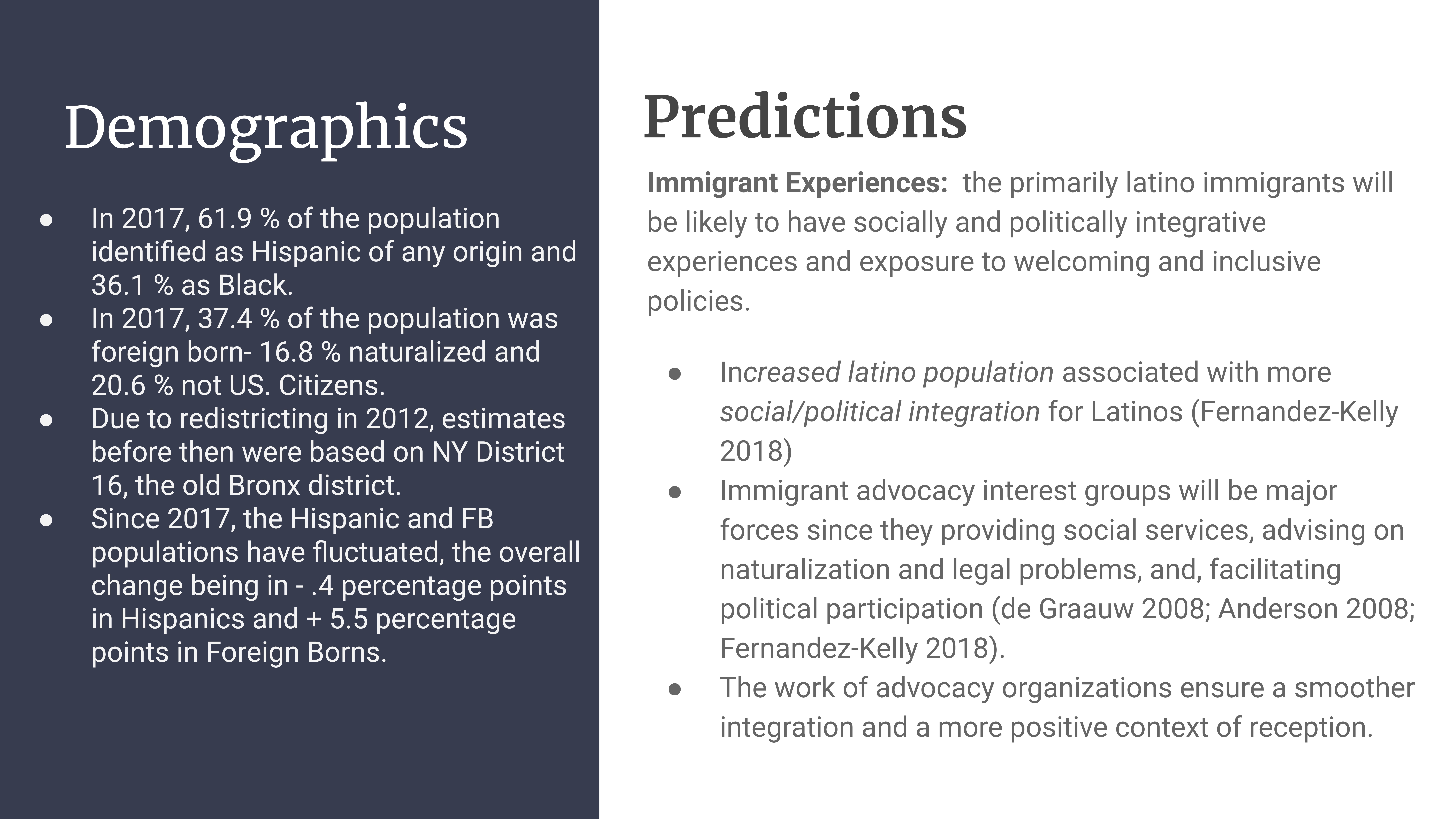
To examine the immigrant experience in the Bronx, I conducted semi-structured interviews with individuals who work for or with the Bronx Immigration Partnership (BIP). To recruit these individuals, I, first, reached out to the Bronx Immigration Partnership and requested interviews with staff members. Then, I reached out to each of their sixteen affiliate organizations to secure a second interview. In these interviews, I asked about them about their background and how they came to immigrant advocacy work, the challenges that immigrants face in the Bronx, how their organization impacts the lives of immigrants (context of reception), how their organization works in tandem with the local government, and how the immigrant experience or context of reception for immigrants is in the Bronx as compared to other Boroughs and other cities. These questions are pointed enough to gauge how immigrants are assisted by these organizations in becoming socially, politically, and economically integrated into society.
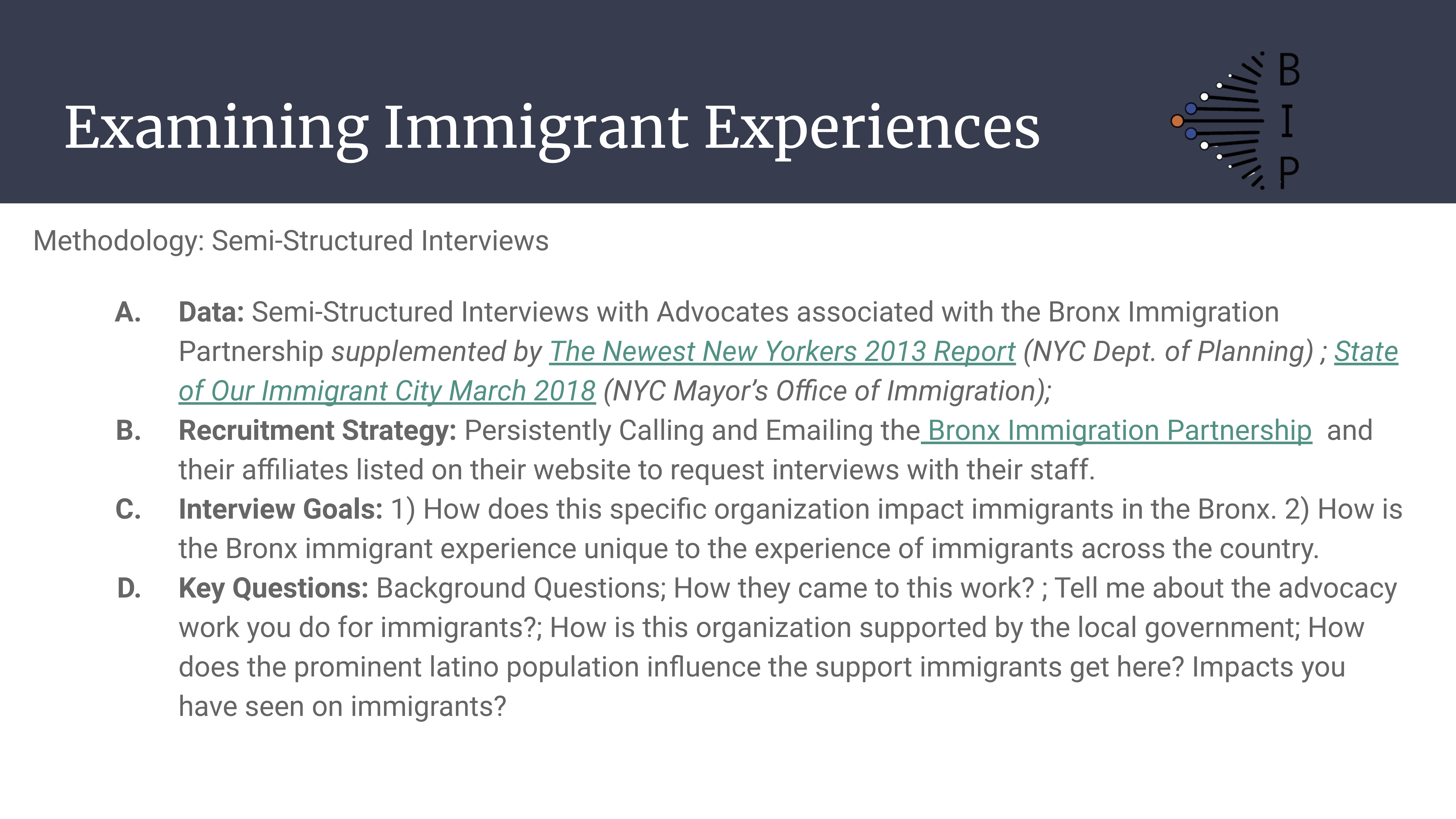
For my interviews, I spoke to the organization coordinator for the Bronx Immigration Partnership and an Immigration Attorney at the Bronx Defenders. In my interview with the BIP coordinator, they spoke to the difficulties of immigrants and the need for a “coordinated safety net of immigration services”. While the Bronx has over sixteen organizations involved in immigration advocacy work, many immigrants do not know where to go for assistance. They also discussed the importance of advocacy on different levels both by providing personal services and by advocating for immigrant policy changes in Albany. In my interview with an immigration attorney for the Bronx Defenders, they spoke about the importance of providing a holistic defense to their clients. They said a criminal case affects every aspect of a person’s life: “It can affect your family, your immigration status, your housing situation; it can impact all these different aspects of your life.” They said, “it’s not just about representing them on the immigration case, it’s figuring out whatever support they may need and referring them to the services that might be necessary.” The Bronx Immigration Partnership is a special system that connects all of these services together so that immigrants can be supported in a number of ways.
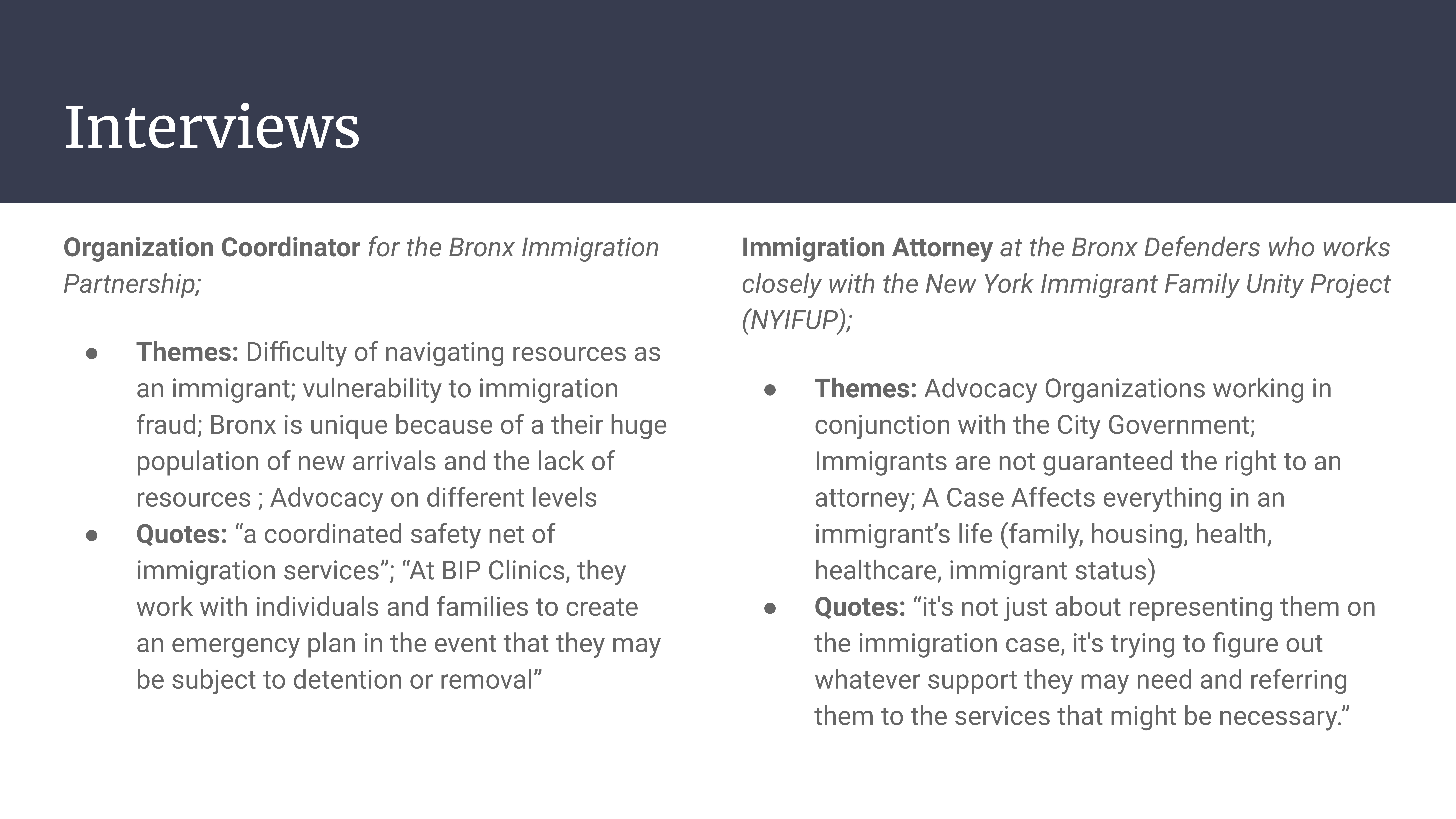
In conclusion, I first identified the struggles that immigrants face in the Bronx, then, the role of immigrant organizations in providing assistance to them, and lastly, how this all contributes to an overall positive context of reception for immigrants in the Bronx. In regards to immigrant struggles, the informants identified a high prevalence of poverty and crime, vulnerability to immigration fraud and difficulty being aware of assistance programs and navigating these services. There are over 16 organizations that provide assistance to immigrants in the Bronx and it is difficult to know about the services they provide. Overall, the work of immigrant organizations ensures smoother integration and a more positive context of reception for new arrivals. On the individual level, they provide legal defense and consul, social services like health care, housing assistance, and English learning programs, and provide immigrant status consultations. On a broader level, through impact litigation they fight injustices that affect groups of immigrants and through advocacy to local, state, and national government, they positively influence policy. As predicted, the nonprofit presence helps create a more positive context of reception for immigrants.
